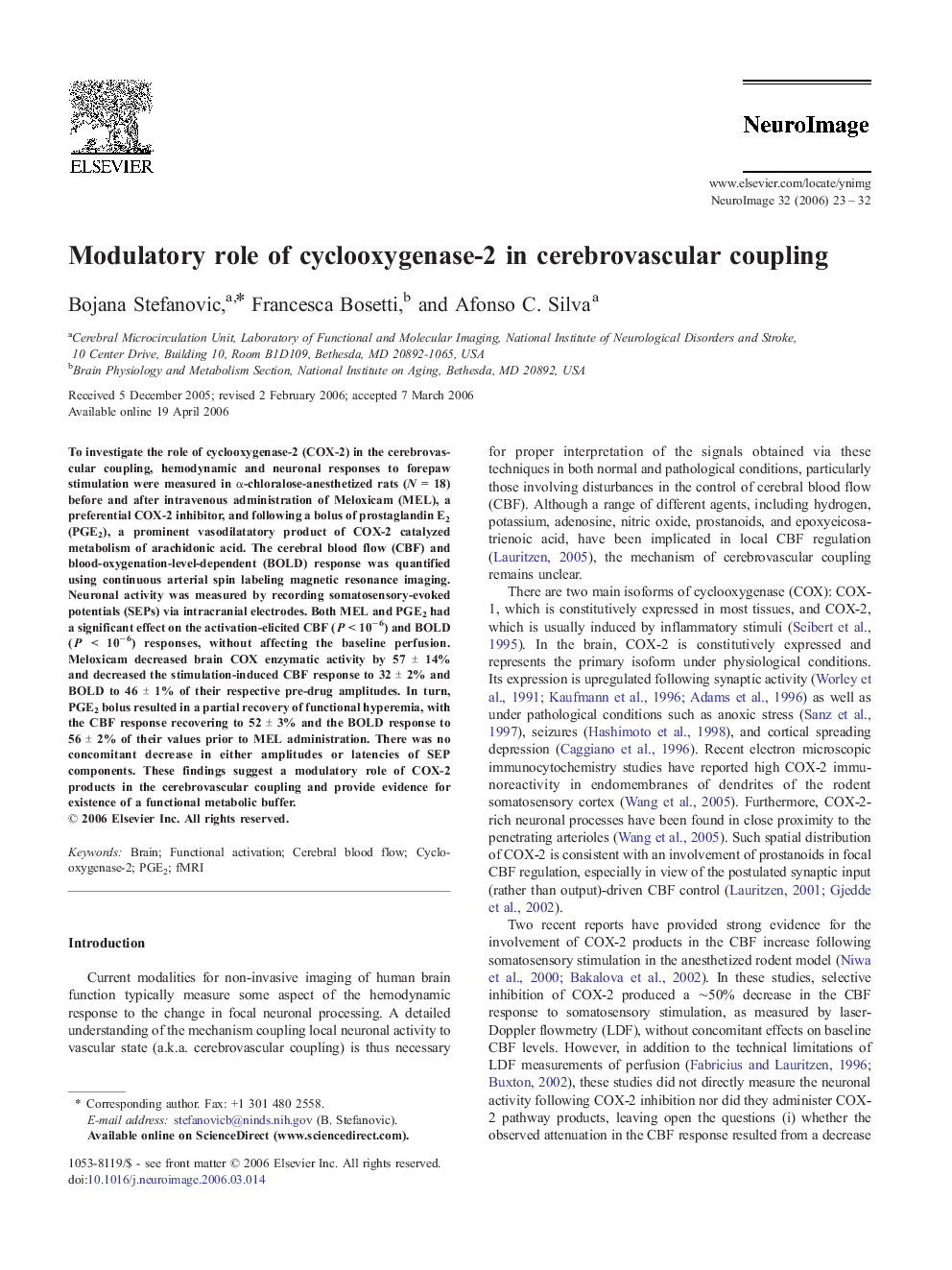| Article ID | Journal | Published Year | Pages | File Type |
|---|---|---|---|---|
| 3074388 | NeuroImage | 2006 | 10 Pages |
To investigate the role of cyclooxygenase-2 (COX-2) in the cerebrovascular coupling, hemodynamic and neuronal responses to forepaw stimulation were measured in α-chloralose-anesthetized rats (N = 18) before and after intravenous administration of Meloxicam (MEL), a preferential COX-2 inhibitor, and following a bolus of prostaglandin E2 (PGE2), a prominent vasodilatatory product of COX-2 catalyzed metabolism of arachidonic acid. The cerebral blood flow (CBF) and blood-oxygenation-level-dependent (BOLD) response was quantified using continuous arterial spin labeling magnetic resonance imaging. Neuronal activity was measured by recording somatosensory-evoked potentials (SEPs) via intracranial electrodes. Both MEL and PGE2 had a significant effect on the activation-elicited CBF (P < 10−6) and BOLD (P < 10−6) responses, without affecting the baseline perfusion. Meloxicam decreased brain COX enzymatic activity by 57 ± 14% and decreased the stimulation-induced CBF response to 32 ± 2% and BOLD to 46 ± 1% of their respective pre-drug amplitudes. In turn, PGE2 bolus resulted in a partial recovery of functional hyperemia, with the CBF response recovering to 52 ± 3% and the BOLD response to 56 ± 2% of their values prior to MEL administration. There was no concomitant decrease in either amplitudes or latencies of SEP components. These findings suggest a modulatory role of COX-2 products in the cerebrovascular coupling and provide evidence for existence of a functional metabolic buffer.
